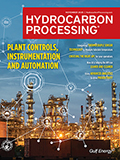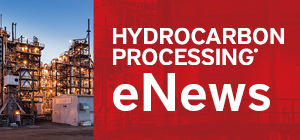
Current Issue: November 2025
Special Focus: Process Controls, Instrumentation and Automation
Process/Plant Optimization
Petrochemical Technologies
Digital Technologies
Valves, Pumps, Compression and Turbomachinery
Maintenance, Reliability and Inspection
Environment and Safety
Columns
Trends & Resources
HP People
Peter Sieber retires from HIMA Group, company realigns strategic marketing
Current Digital Edition

Sign up to Receive Our Newsletter
Latest News
- Tasnee's Saudi Ethylene and Polyethylene Co. commences planned maintenance of ethylene plant 1/2
- Advanced Biofuels Canada Association welcomes federal biofuels production incentive coming into force 1/2
- Technip Energies completes acquisition of Ecovyst’s Advanced Materials & Catalysts business 1/2
- Peru opens state-owned Petroperu to private investment after reorganization 1/2
- Brazil's Petrobras cuts jet fuel prices by 9.4% 1/2
- Norway's new car sales were 96% electric in 2025 1/2
Construction Boxscore: Project Spotlight
Project:
Long Son Petrochemicals Complex
Location:
Long Son, Vietnam
Operator:
Siam Cement Group
Cost:
$5.4 B
Capacity:
1.65 MMtpy
Completion date:
2023
Status:
Under Construction




